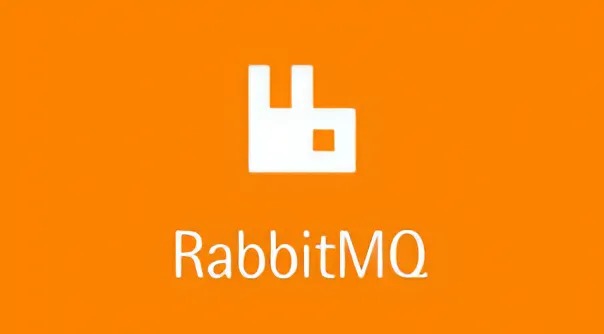What is RabbitMQ? The Power of Message Queuing Systems
RabbitMQ is one of the most popular representatives of message queuing systems in the modern software world. If you are a software developer, system architect or tech geek, you have probably heard of RabbitMQ. But what exactly is RabbitMQ? Why is it so popular? In this article, we’ll take a candid and detailed look at what RabbitMQ is, how it works, and why message queuing systems are essential for businesses. Whether you’re a beginner or an experienced developer, this guide will give you a clear understanding of RabbitMQ’s power and use cases. If you’re ready, let’s dive into the fascinating world of message queues!

What Are Message Queuing Systems?
Message queuing systems enable efficient data exchange between applications or systems. A producer sends messages, which the system stores in a queue, and consumers process them sequentially. Consequently, these systems ensure asynchronous, reliable communication, particularly for high-volume data flows.
Here are the key benefits of these systems:
-
Asynchronous Operation: The sender and receiver operate independently, as the queue holds messages until processing. For instance, this allows flexibility in timing.
-
Load Balancing: The system distributes workloads effectively, boosting performance.
-
Reliability: The queue securely stores messages, preventing data loss.
-
Platform Independence: The system supports compatibility across various languages and platforms.
For example, RabbitMQ, an open-source message queuing solution, maximizes these advantages.
RabbitMQ Basics and Working Principle
RabbitMQ, an open-source message queuing software, leverages the AMQP (Advanced Message Queuing Protocol) and uses Erlang for high performance, scalability, and reliability. Moreover, developers frequently adopt it in modern software architectures. So, how does RabbitMQ function?
Key Components
-
Producer: This component generates and sends messages to the queue. For example, an e-commerce application sending order details acts as a producer.
-
Queue: This structure holds messages and delivers them to consumers in sequence.
-
Consumer: This component retrieves and processes messages from the queue. For instance, a service saving data to a database serves as a consumer.
-
Exchange: This router directs messages to queues based on specific types, such as direct, topic, fanout, or headers.
-
Binding: This defines the link between the exchange and the queue, determining the message destination.
Workflow
The message flow operates as follows:
-
The producer sends a message to the exchange.
-
The exchange routes the message to the appropriate queue based on predefined rules.
-
The consumer retrieves and processes messages from the queue.
As a result, this structure supports microservice architectures by enabling independent system operations.
Why Choose RabbitMQ?
What makes RabbitMQ so popular? Here are its primary advantages:
-
High Performance: Thanks to its Erlang foundation, RabbitMQ processes millions of messages swiftly.
-
Flexible Routing: Various exchange types allow the system to distribute messages across diverse scenarios.
-
Multi-Protocol Support: RabbitMQ supports AMQP, MQTT, and STOMP, among others.
-
Scalability: Features like clustering and federation make it ideal for large systems.
-
Reliability: Persistent queues and acknowledgment mechanisms prevent message loss.
-
Wide Ecosystem: RabbitMQ provides client libraries for languages like Java, Python, and .NET.
Usage Areas
RabbitMQ serves a variety of scenarios:
-
Microservices: It facilitates asynchronous communication. For example, it connects a payment service with stock management.
-
IoT Applications: With MQTT support, it collects and processes sensor data efficiently.
-
Log Management: It excels at gathering and analyzing large volumes of log data.
-
Task Queues: It manages asynchronous tasks, such as video encoding, for long-running operations.
Installation and First Steps
Starting with RabbitMQ is straightforward. Follow these steps:
-
Installation: Download RabbitMQ from its official website; it supports Linux, Windows, and macOS.
-
Erlang Requirement: Install the appropriate Erlang runtime version first.
-
Management Panel: Use the web-based interface to visualize queues and monitor message flow.
-
First Message: Quickly send and receive messages using the pika library in Python.
Here’s an example Python code:
import pika
connection = pika.BlockingConnection(pika.ConnectionParameters(‘localhost’))
channel = connection.channel()
channel.queue_declare(queue=’hello’)
channel.basic_publish(exchange=”, routing_key=’hello’, body=’Hello World!’)
print(“Message Sended!”)
connection.close()
Frequently Asked Questions
Comparison with Other Message Queuing Systems
Compared to alternatives such as Apache Kafka, ActiveMQ or Redis, RabbitMQ stands out for its flexibility and AMQP support. However, Kafka may be more suitable for high-volume data flows.
Security Features
Provides secure communication with SSL/TLS support and access control lists (ACLs). User authentication is also supported.
As a result, message queuing systems are one of the cornerstones of modern software architectures. RabbitMQ stands out with its performance, flexibility and reliability. From microservices to IoT, this tool can make your systems more scalable and efficient. In this guide, we have explored the basic logic of message queues and the power of RabbitMQ in detail. Now you know how to use this technology in your projects. Come on, take your systems to the next level!


